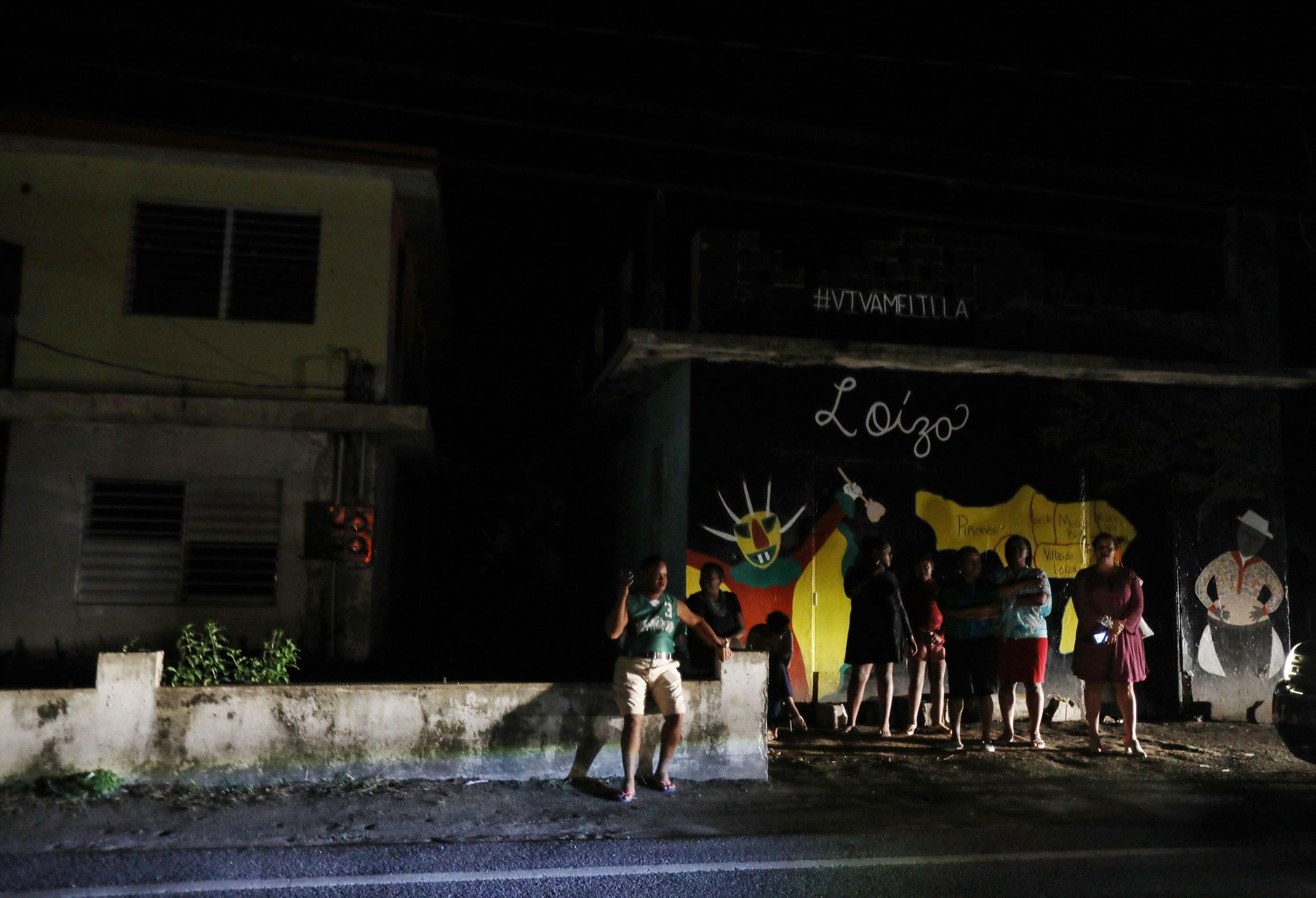Half of Puerto Rico is still without power 100 days after Hurricane Maria hit the island
Experts say that some parts of the island are not expected to get power back until next Spring

Your support helps us to tell the story
From reproductive rights to climate change to Big Tech, The Independent is on the ground when the story is developing. Whether it's investigating the financials of Elon Musk's pro-Trump PAC or producing our latest documentary, 'The A Word', which shines a light on the American women fighting for reproductive rights, we know how important it is to parse out the facts from the messaging.
At such a critical moment in US history, we need reporters on the ground. Your donation allows us to keep sending journalists to speak to both sides of the story.
The Independent is trusted by Americans across the entire political spectrum. And unlike many other quality news outlets, we choose not to lock Americans out of our reporting and analysis with paywalls. We believe quality journalism should be available to everyone, paid for by those who can afford it.
Your support makes all the difference.For the first time in the 100 days since Hurricane Maria slammed Puerto Rico, the government finally knows how many people still don’t have power: about half.
The figure released on Friday by the island’s governor and power utility company indicates that more than 1.5 million people on the island are still in the dark. Experts say some parts of the island are not expected to get power back until next spring.
“We understand how difficult it has been for the people of Puerto Rico who have been without power for so long,” said Governor Ricardo Rosselló of Puerto Rico as he announced a request for up to 1,500 more restoration workers from the mainland’s electric industry.
In its statement on Friday, authorities said power restoration has been slow because of the sheer scale and complexity of the damage. Much of the island’s 2,400 miles of transmission lines, 30,000 miles of distribution lines and 342 substations were damaged in the storm, they said. Carlos D Torres, the system’s restoration coordinator, said workers were finding “unexpected damage” in some areas even as they make repairs in others.
José E Sánchez, who heads the US Army Corps of Engineers taskforce to restore power in Puerto Rico, said some homes were so damaged they are unable to receive electricity, though he did not know how many homes were in that situation.
The island’s governor and power utility said that of the homes that could receive electricity, roughly 55 percent have had their service restored. He noted that the government’s new estimate includes five towns that recently received temporary fixes from Corps generators.
Sánchez acknowledged that the 55 percent restoration was hardly a success.
“55 percent? No, oh my gosh, I want it quicker, faster, better,” he said.
He said the Corps has increased its number of crews working on the island, and many of the materials ordered in October are beginning to arrive. Some private companies that had committed to help Puerto Rico will begin to arrive in January.
Several investor-owned electric companies that are members of the Edison Electric Institute will deploy nearly 1,500 additional restoration workers and support personnel to Puerto Rico in early January to accelerate on-going power restoration efforts across the island, the agency announced on Thursday.
Sánchez said the companies faced the same kind of logistical challenges that kept them from arriving sooner.
“A lot of people are angry,” said Cannabis Nebot, 43, who lives in Arecibo, where power was largely restored. “They don’t believe what the government says about the power outage. You can see on Facebook a lot of people saying that they got no light. A lot of people in the countryside have no light. Or some towns have it, but it comes and goes.”
The government had previously not been able to say how many people had power because of damage to the outage management system. The government has repaired the fibre-optic cables that allow the system to read meters.
Hurricane Maria slammed into Puerto Rico as a Category 4 storm on 20 September, flooding neighbourhoods and villages and cutting the power to 3.4 million people. The darkness has left enormous swaths of the island living without hot meals, electric fans or night time lights. It has hobbled business in an already weak economy and left people’s lives at risk in hospitals or senior complexes without power. A New York Times analysis found the death rate rose considerably on the island after the hurricane passed and the outages became part of life.
The power utility has been heavily criticised for its response to the outage. In mid-November, the chief executive of PREPA stepped down after a public outcry over its decision to award a $300 million (£220 million) restoration contract to a tiny Montana firm. The government has since cancelled that contract.
“We won’t be satisfied until it’s 100 percent,” said Gerardo Quiñones, a spokesman for PREPA. “The media can criticise all it wants, but this is a result of a lot of hard work. We are getting results.”
The New York Times
Join our commenting forum
Join thought-provoking conversations, follow other Independent readers and see their replies
Comments